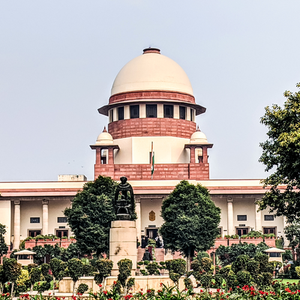Supreme Court clarifies the rights of recovery certificate holders under the Insolvency and Bankruptcy Code

The Insolvency and Bankruptcy Code, 2016 (Code) was enacted to consolidate and amend the laws relating to reorganization and insolvency resolution of corporate persons. However, the overlap of the Code with the erstwhile laws relating to insolvency and recovery of debts, such as the Securitization and Reconstruction of Financial Assets and Enforcement of Security Interest Act, 2002 (SARFAESI Act) and the Recovery of Debts and Bankruptcy Act, 1993 (Debt Recovery Act) has often resulted in contentious and debated issues in debt-recovery and insolvency proceedings in India.
Recently, the Supreme Court of India in its judgment of Kotak Mahindra Bank Limited v. A. Balakrishnan & Anr. (A. Balakrishnan Judgment) has clarified the position on whether a bank or financial institution holding a recovery certificate under the Debt Recovery Act can initiate insolvency resolution process of the debtor under the Code.
Recovery Certificate under the Debt Recovery Act
The Debt Recovery Act was enacted for expeditious adjudication and recovery of debts due to banks and financial institutions. Under this act, banks and financial institutions could file an application before the Debt Recovery Tribunals (DRT) for recovery of debts from defaulting debtors. After hearing all parties, a final order is passed by DRT directing the defaulting borrowers to pay the due amount and a recovery certificate is issued along with the final order. In case the borrower does not pay the ordered amount, the recovery certificate is then executed by the recovery officer of the DRT.
Facts of the A. Balakrishnan Judgement
In the present case, Kotak Mahindra Bank Limited (Kotak Mahindra) entered into a compromise deed with certain borrowers which included Prasad Properties and Investments Private Limited (Prasad Properties) for the payment of a specified amount. When the borrowers defaulted in paying the said amount, Kotak Mahindra approached the DRT under the Debt Recovery Act. The DRT allowed the applications filed by Kotak Mahinda and issued recovery certificates against each of the borrower.
Later, Kotak Mahindra filed an application before the National Company Law Tribunal (NCLT) seeking the initiation of insolvency resolution process against Prasad Properties. Though insolvency resolution process was initiated by the NCLT, the National Company Law Appellate Tribunal (NCLAT) set aside NCLT’s order stating that the issuance of recovery certificates by the DRT would not give a right to initiate insolvency resolution proceedings. The NCLAT’s order was then challenged by Kotak Mahinda before the Supreme Court.
The Supreme Court noted that ‘claim’ under the Code includes “a right to payment, whether or not such right is reduced to judgment…”. Similarly, under the Code, the definition of ‘financial debt’ uses the word “and includes” signifying that the definition provided under the Code is not exhaustive. On the conjoint reading of the definition of ‘claim’ and ‘financial debt’ under the Code and keeping in mind the legislative intent of the Code, the Supreme Court was of the view that a ‘claim’ being fructified by a final judgment and decree / order, upon adjudication, and a certificate of recovery is issued to realize its decretal dues, the same would fall in the ambit of financial debt under the Code.
The Supreme Court while disagreeing with NCLAT, held that a recovery certificate entails a fresh debt and consequently, a right to sue. The Court held that a liability in respect of a claim arising out of a recovery certificate would be a ‘financial debt’ under the Code and therefore, the holder of a recovery certificate would be a financial creditor. Thus, such a financial creditor would be entitled to initiate insolvency resolution process of the defaulting debtor, if the application is filed within a period of three years from the date of issuance of the recovery certificate by the DRT.
Our thoughts
The A. Balakrishnan Judgment clarifies that a recovery certificate holder must be treated on par with a financial creditor under the Code. This judgement will offer a much-needed tool to institutional lenders who can now initiate insolvency proceedings against debtors for long pending debts, even if the period of limitation from the date of original default had expired, subject to initiating NCLT proceedings within three years of issuance of the recovery certificate. Further, at a conceptual level, this judgement brings much needed harmony between the insolvency law and the debt recovery laws.
Authors: Souvik Ganguly, Renjith Nair and Altamash Qureshi
The information contained in this document is not legal advice or legal opinion. The contents recorded in the said document are for informational purposes only and should not be used for commercial purposes. Acuity Law LLP disclaims all liability to any person for any loss or damage caused by errors or omissions, whether arising from negligence, accident or any other cause.